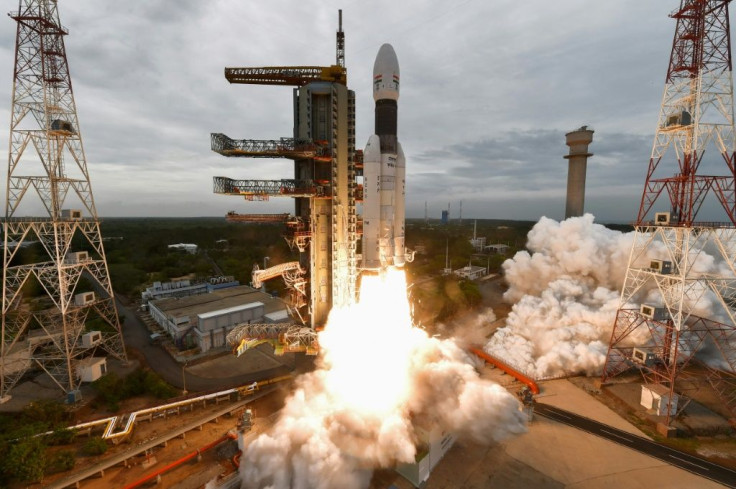Successful Landing Of India's Moon Mission Could Inspire Nations With Light Budget To Join Space Exploration

KEY POINTS
- The descent of the Chandrayaan-3 mission's Lander Module is expected to begin at around 8:15 a.m. ET Tuesday
- With a soft landing, India would make history as the first nation to land near the little-explored south pole of the moon
- India's Chandrayaan-2 mission was launched in 2019 and crashed into the lunar surface
India's ambitious Chandrayaan-3 mission is inching closer toward landing on the surface of the moon.
The Indian Space Research Organisation (ISRO) is preparing for the soft-landing of the spacecraft on the moon's south pole Wednesday, over a month after Chandrayaan-3 shot up into space on July 14.
A successful landing could "inspire many countries to get into space programs with a lighter budget," astrophysicist Sandip Chakrabarti told International Business Times.
The descent of the Chandrayaan-3 mission's Lander Module (LM) is expected to begin at 5:45 p.m. Indian Standard Time (IST), which is around 8:15 a.m. Tuesday, Eastern Time (ET).
"The mission is on schedule. Systems are undergoing regular checks. Smooth sailing is continuing. The Mission Operations Complex (MOX) is buzzed with energy & excitement!" the Indian space agency said Tuesday.
Chandrayaan-3 Mission:
— ISRO (@isro) August 22, 2023
The mission is on schedule.
Systems are undergoing regular checks.
Smooth sailing is continuing.
The Mission Operations Complex (MOX) is buzzed with energy & excitement!
The live telecast of the landing operations at MOX/ISTRAC begins at 17:20 Hrs. IST… pic.twitter.com/Ucfg9HAvrY
Despite having a smaller budget than the space programs of other countries, India has managed its crunch for resources and made notable strides in space exploration.
"One sector in which India has been far behind in comparison to other developed nations is the space sector. Due to a large inertia of 1.4 billion people, India has not been able to spend appropriate amounts to fund this sector, despite starting the program at a similar time as that of NASA," Chakrabarti said. "Only recently it has turned its attention towards science. But it is a long way to go. Most of our scientific knowledge about the Universe is from NASA."
"ISRO is trying hard to improve our visibility index and to be honest, it has been quite successful recently with dozens of oneweb satellite launches and helping many private startups. Its frugal approach in reaching the Moon in 2008, and 2019, to Mars in 2014 etc. are exemplary and will inspire many countries to get into space program with lighter budget. This is where India leads the whole world. Clearly a success of Chandrayaan-3 would boost the morale of the entire nation and confidence of the entire world on our capabilities," he added.
If India sees the successful landing of the Chandrayaan-3, the country would make history as the first nation to land near the little-explored south pole of the moon. This would be a fitting rewrite of India's failed Chandrayaan-2 mission, which was launched in 2019 and crashed into the lunar surface.
A successful soft landing would also put India in the elite space club of nations that have managed to achieve a soft landing on the moon. The U.S., China, and the former Soviet Union are currently the only members of that club.
India's first mission to the moon was launched in October 2008 with the successful launch of Chandrayaan-1. The spacecraft carried with it 11 scientific instruments made in India, the United States, the United Kingdom, Germany, Sweden, and Bulgaria. Communication with the orbiter was lost in August 2009 after it played a crucial role in the discovery of water on the moon.
© Copyright IBTimes 2025. All rights reserved.






















